Mangoes are a summer fruit in Taiwan, grown mainly in the southern part of the island where the high temperatures and humidity are ideal for their cultivation. Three strains are found, the indigenous, South Sea and United States.
What is known locally as the "indigenous" mango, was originally cultivated in India more than 4,000 years ago, and introduced to Taiwan by the Dutch in 1561. This egg-shaped, juicy strain of mango is sweet and aromatic though its fruit is fibrous, and it has a large stone. The largest concentration of the trees was once to be found around Liuchia village in Tainan County. As mango trees can live for hundreds of years, many of them look weathered and gnarled.
Most of the indigenous mangoes are cultivated in courtyards or along roadsides. As the trees of this strain are tall, farmers usually fasten a plucking bag on a long bamboo stick to collect the ripe fruit. Sometimes, fruit sellers can be seen lining the north-south highway from Tounan to Taiwan in southern Taiwan soon after the harvest is gathered.
The South Sea strain of mango was introduced some 50 years ago from the South Pacific islands. As it has an unfamiliar taste and large stone, it has little appeal to people in Taiwan, and its plantation area is limited.
The improved strain of mango was introduced to Taiwan in 1954 from Florida, the United States by the (Sino-U.S.) Joint Commission on Rural Reconstruction or the now Council for Agricultural Planning and Development. Later, the Fengshan Tropical Horticultural Experimental Station and Chiayi Agricultural Experimental Station chose five strains with the highest economic value-Irwin, Hidun, Zill, Kent and Keit for farmers to grow in Taiwan.
The U.S. strain of mango is characterized by its large size, purple-red skin and yellowish pulp. Because of its relatively round shape, it is referred to locally as the applemango. It is not so aromatic as the indigenous strain, but it has a sweet pulp, small pit and very few fibers. Since the trees are low, their yields high and their fruit popular in Taiwan, the U.S. strain has gradually replaced the indigenous type. Special care must be paid, however, to such matters as fertilizing, irrigating, pruning and pest control.
The Irwin, Hidun and Zill strains ripen in the period from May to July, and the Kent and Keit from July to September. If the fruit are destined for the local market, they are gathered just before ripening. If they are for export, then they are gathered when they are still green to allow long-term storage during transportation .
Today, specialized districts for mango cultivation have been set up at Yuching, Nanhsi, and Nanhua villages in Tainan County, and more are planned. The government provides subsidies for farmers in these districts to establish irrigation and pest control facilities, and reconstruct roads and bridges to facilitate transportation. Not only does this modern management and cultivation system reduce costs, but it also ensures fruit from the mango specialized districts are of the best quality.
Every morning in the summer, farmers go out to gather the fruit and transport them to farmers' associations headquarters. There they are graded and placed in warm water for 10 minutes to remove pests, before they are wrapped in paper, and placed in cardboard boxes. Early next morning, the fruit are sent to the Taiwan Fruit and Vegetable Marketing Corporation to be put on sale.
On the average, fresh mangoes fetch about NT$30 (US$0.85) per catty, but this may fall to NT$10 during the peak season. The farmers' associations average out the prices to assure constant earnings for farmers.
At present, the plantation area devoted to mango trees in Taiwan is 12,000 hectares, with an average harvest of 4,000 kilograms per hectare. Most of the fruit is sold on the local market, although some is exported to Hong Kong and Japan, or in the processed form to Europe, the U.S. and the Middle East.
Helped by grants from the Land Bank of Taiwan and the Central Government, the Taiwan Provincial Fruit Marketing Corporation has adopted scientific methods in exporting mangoes. To provide further assistance, the Department of Agriculture and Forestry of the Taiwan Provincial Government has set up a 30-hectare mango export demonstration area, where the yield is an average of 2,000 kilograms of high-quality fruit per hectare. Modern methods are employed to gather, transport and pack mangoes. It is expected that with assistance from the government, foreign markets for mangoes will be enlarged in the future.
[Picture Caption]
Left: A young boy can hardly wait to get his teeth into a large and tasty mango. Right: The trees of the U.S. strain of mango are low and their fruit is easily collected.
1. Light green mangoes. 2. The Irwin strain of mango in the upper level and the White strain, which has low economic value. 3. The grading operation in the farmers' associations.
1. The indigenous strain of mango was the first to be introduced to Taiwan. 2. Farmers sorting and gathering mangoes during the peak season. 3. In the specialized district for mango cultivation, plastic bags are used to protect the fruit from pests.
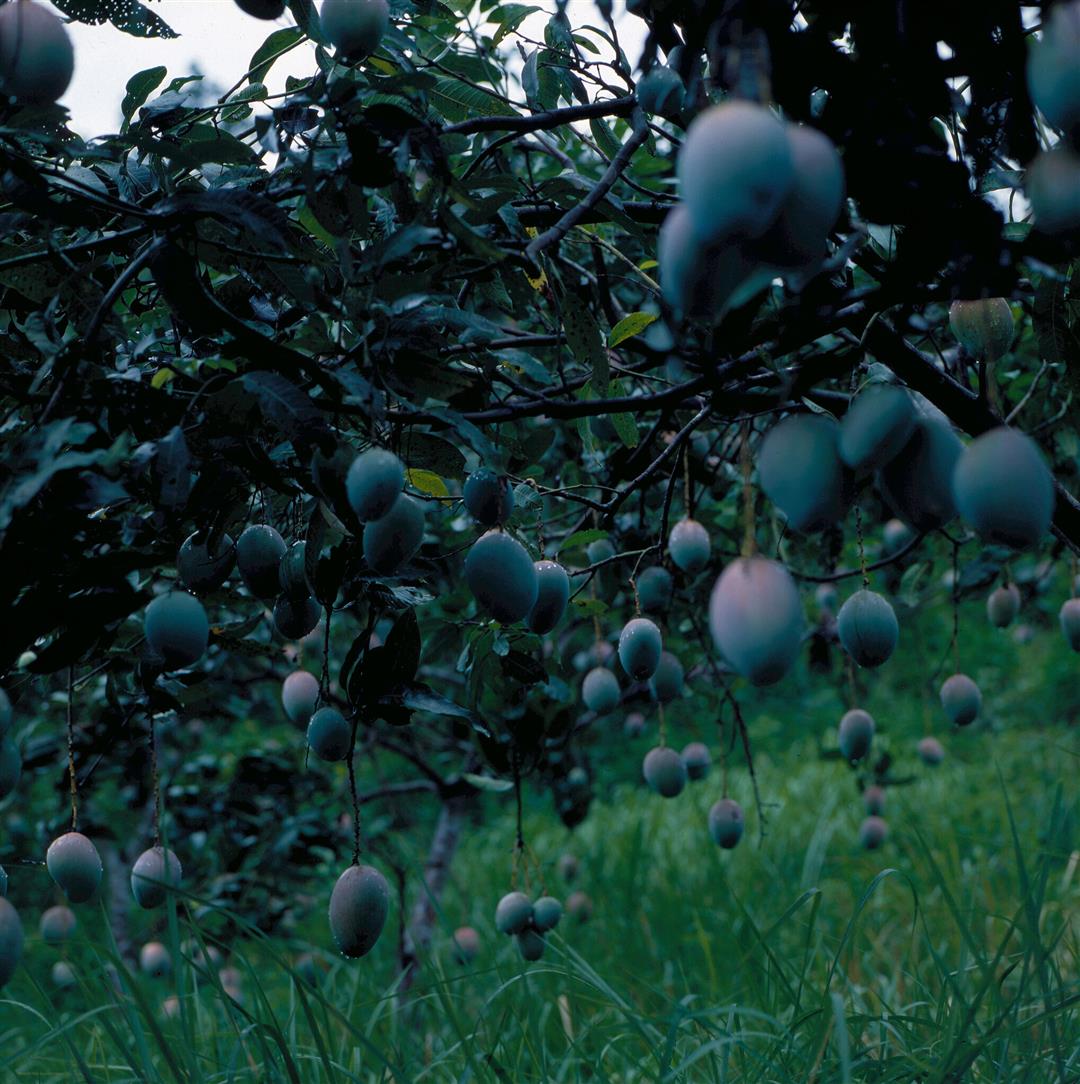
The trees of the U.S. strain of mango are low and their fruit is easily collected.
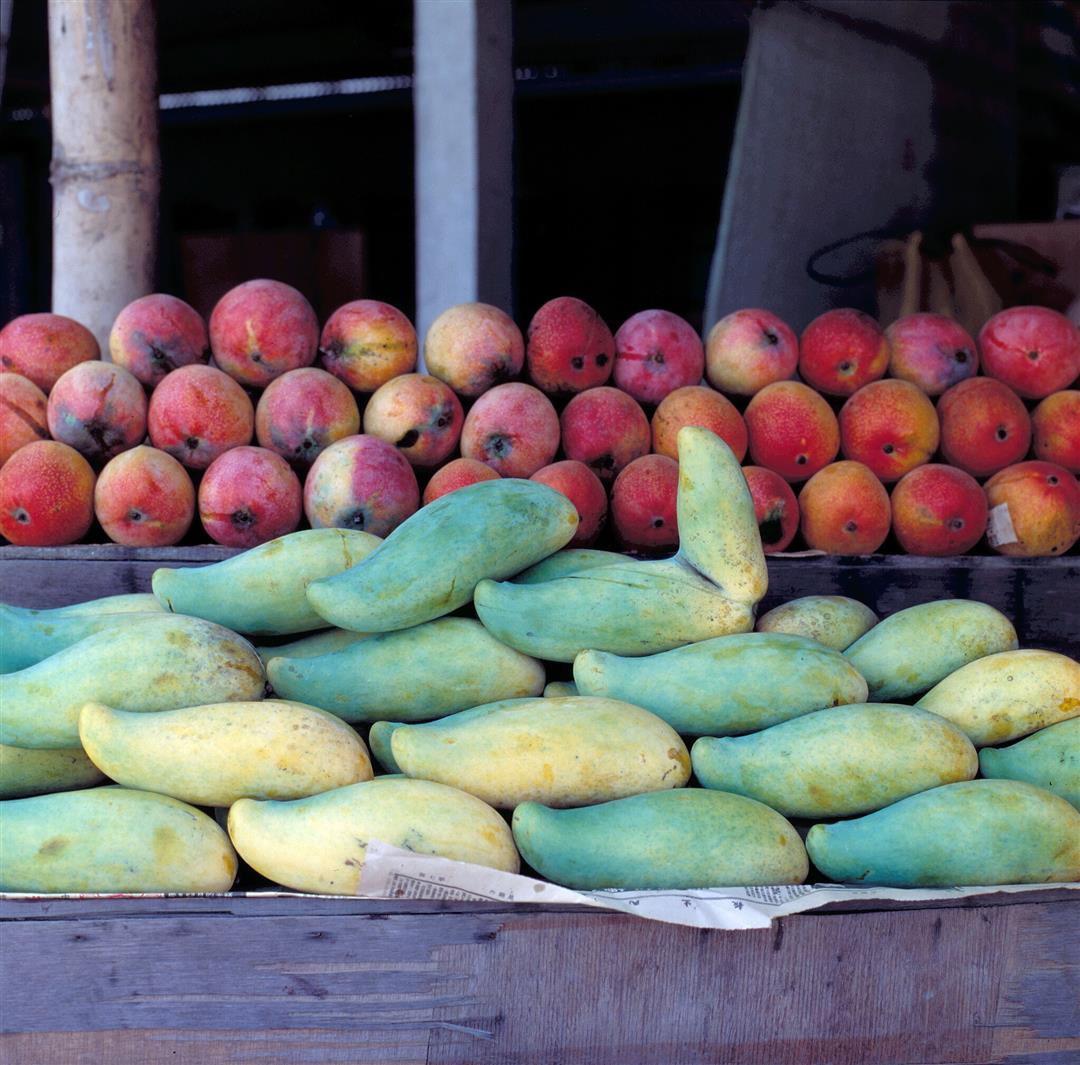
The Irwin strain of mango in the upper level and the White strain, which has low economic value.
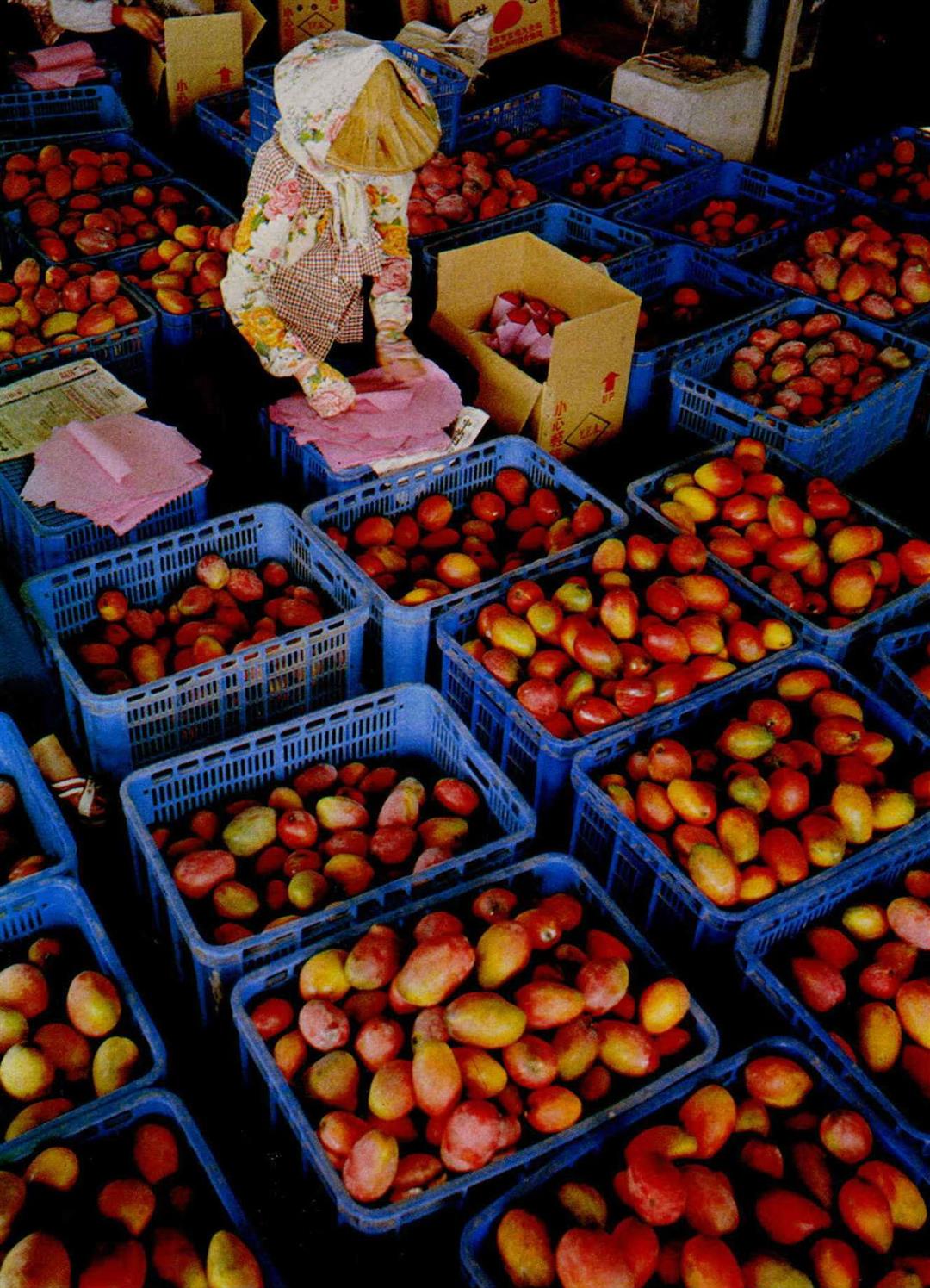
The grading operation in the farmers' associations.

The indigenous strain of mango was the first to be introduced to Taiwan.
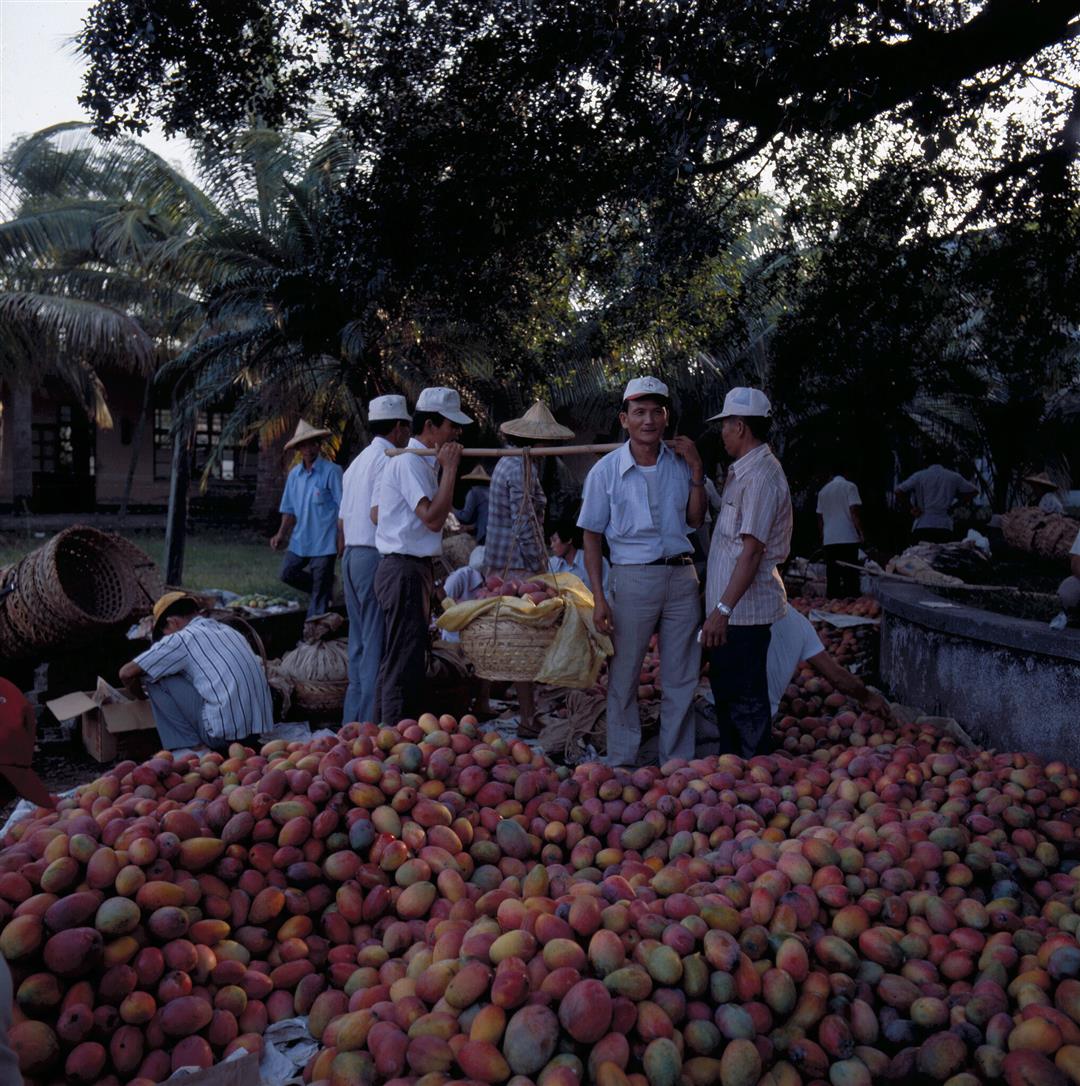
Farmers sorting and gathering mangoes during the peak season.
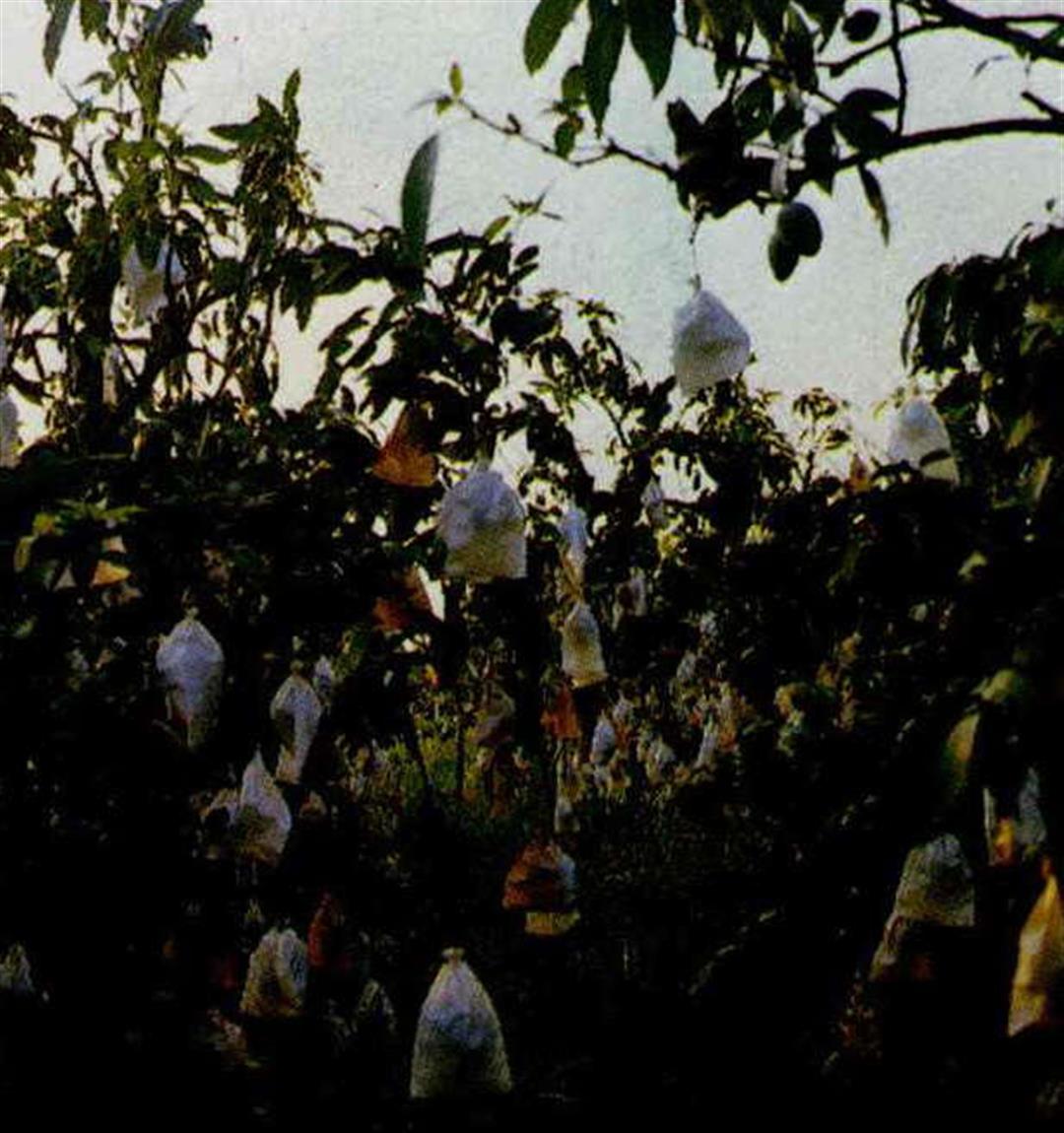
In the specialized district for mango cultivation, plastic bags are used to protect the fruit from pests.